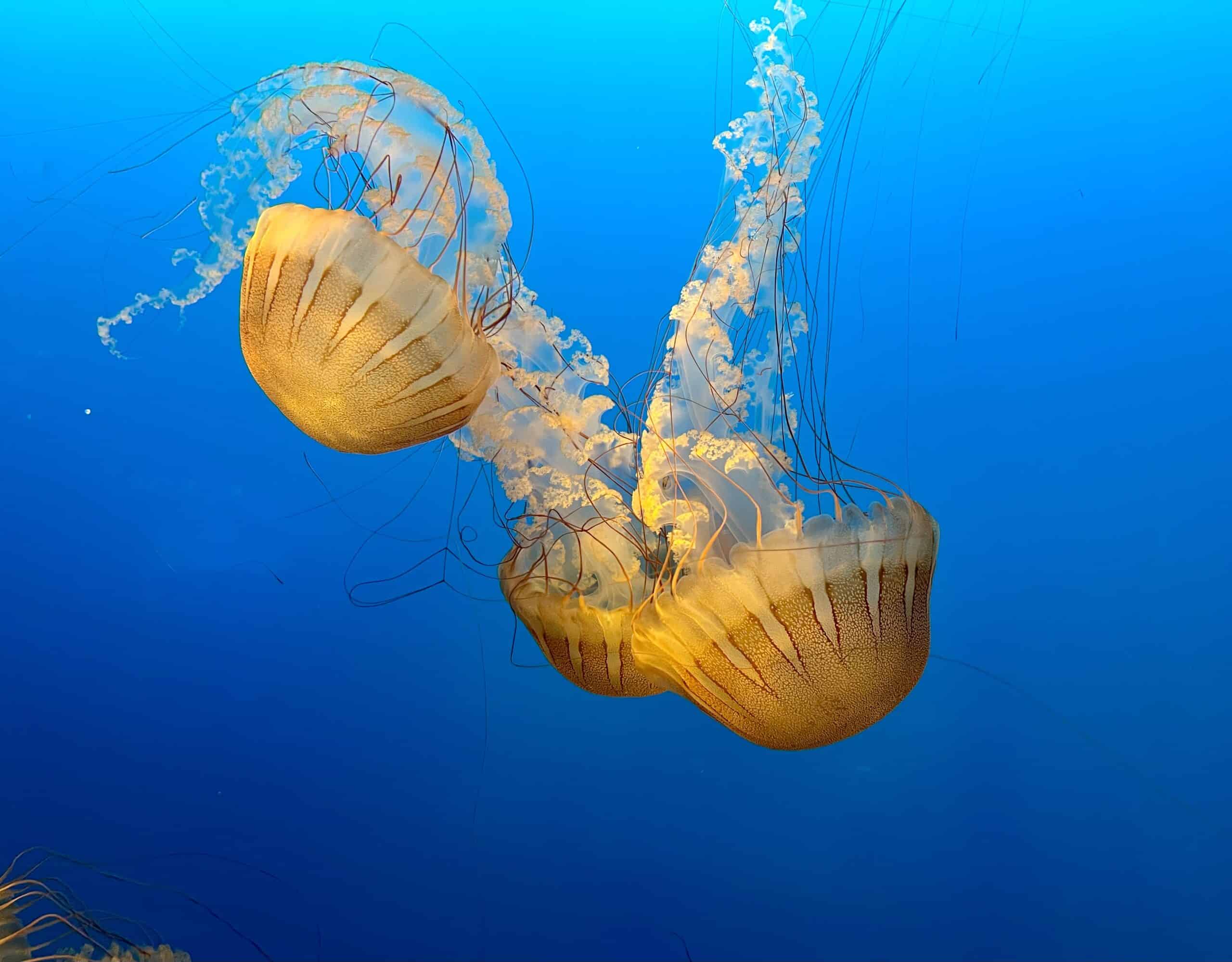On a Monday morning in November, I arrived at the Zoo in Kansas City Missouri right when it opened at 9:30. I passed through the gates with a stream of eager young parents and their littles.
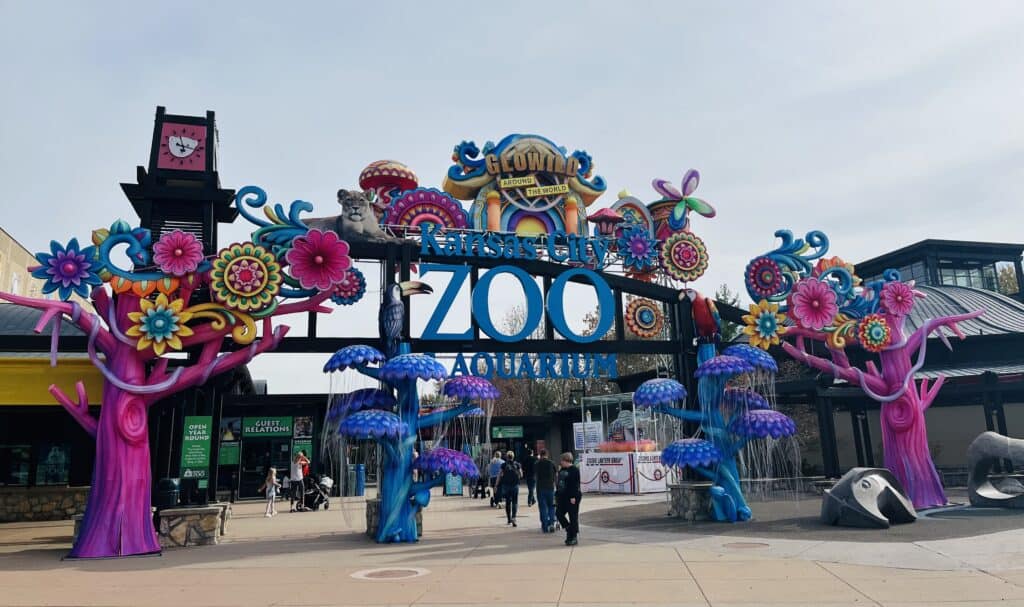
I knew we were all in for a treat as the welcoming arch beckoned with blazing colors. I discovered that the sculptures are dotted throughout the Park. They were created and provided by Zigong Lantern Group. Each one is made of steel and silk. When I looked closely I was impressed that the silk had stood up admirably through our recent hail and rain storms. They are still flawless in shape and retention of color. I had no idea that silk was so hardy. I always thought of this fabric as delicate and fragile.
I was drawn to the Zoo’s massive aquarium building. Each tank within is vibrant with aquatic life and color.
After enjoying the hypnotic undersea worlds of the Aquarium, I crossed over the path to the Helzberg Penguin Plaza.
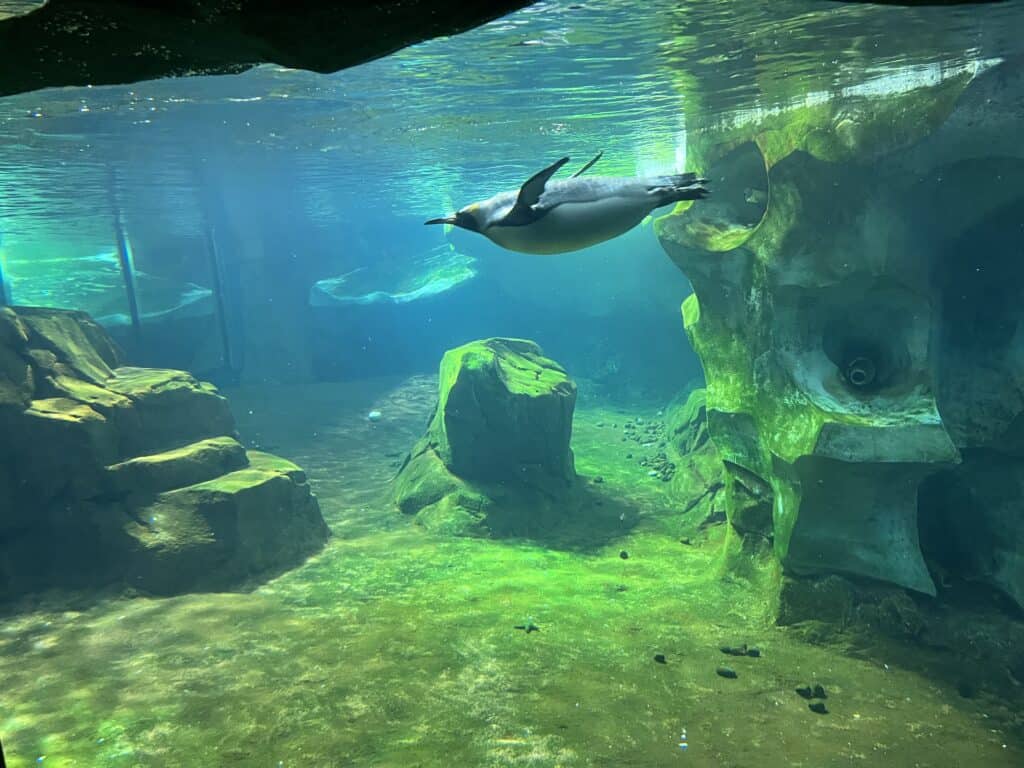
These little fellas are delightful to watch. You can’t help but smile at the charming figure they cut. I have always had a soft spot in my heart for penguins.
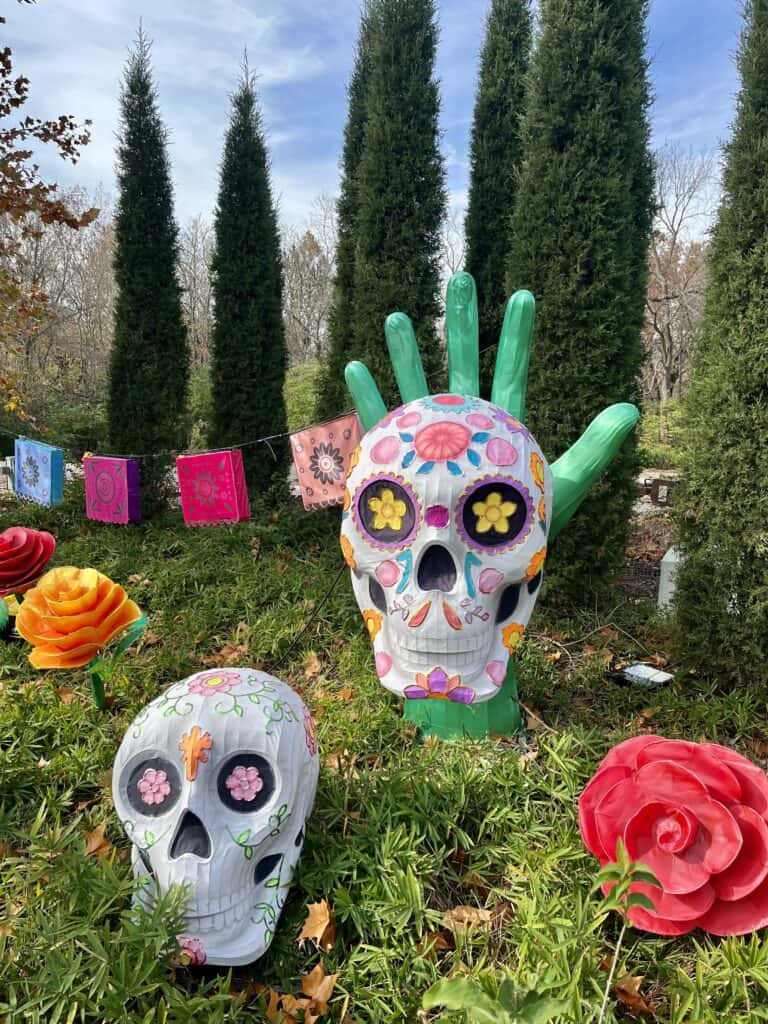
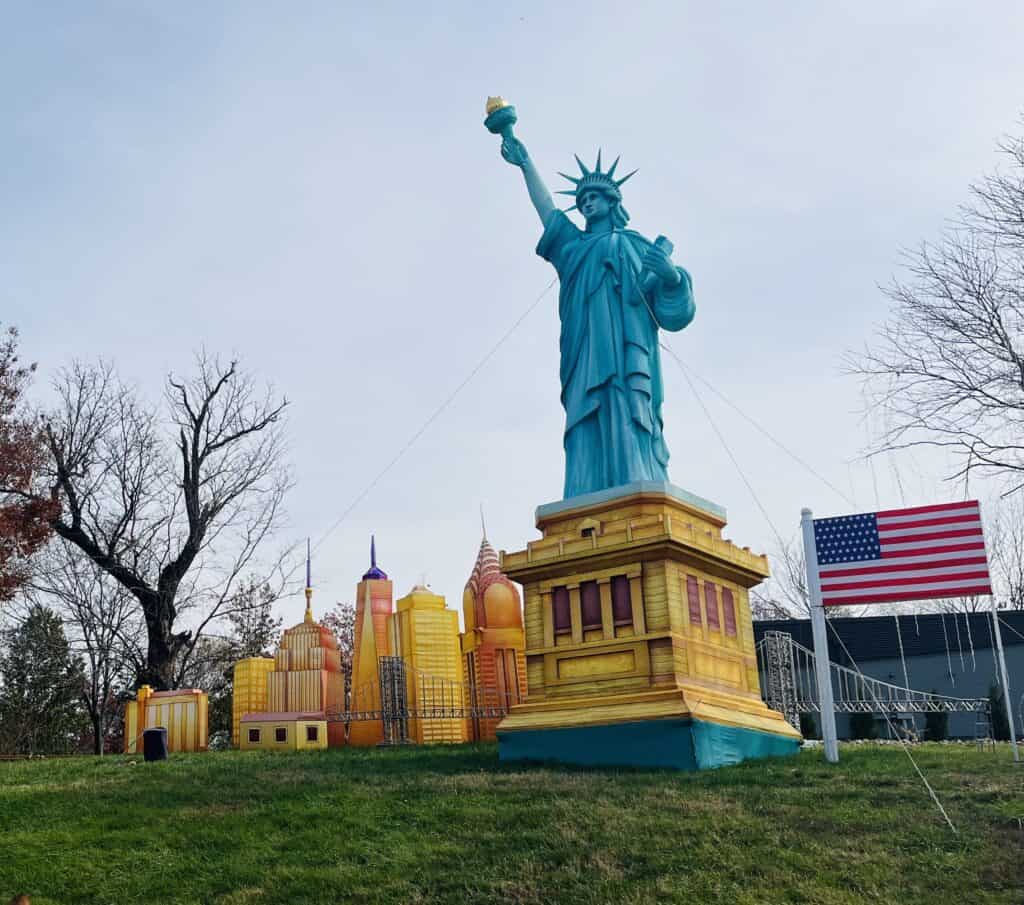
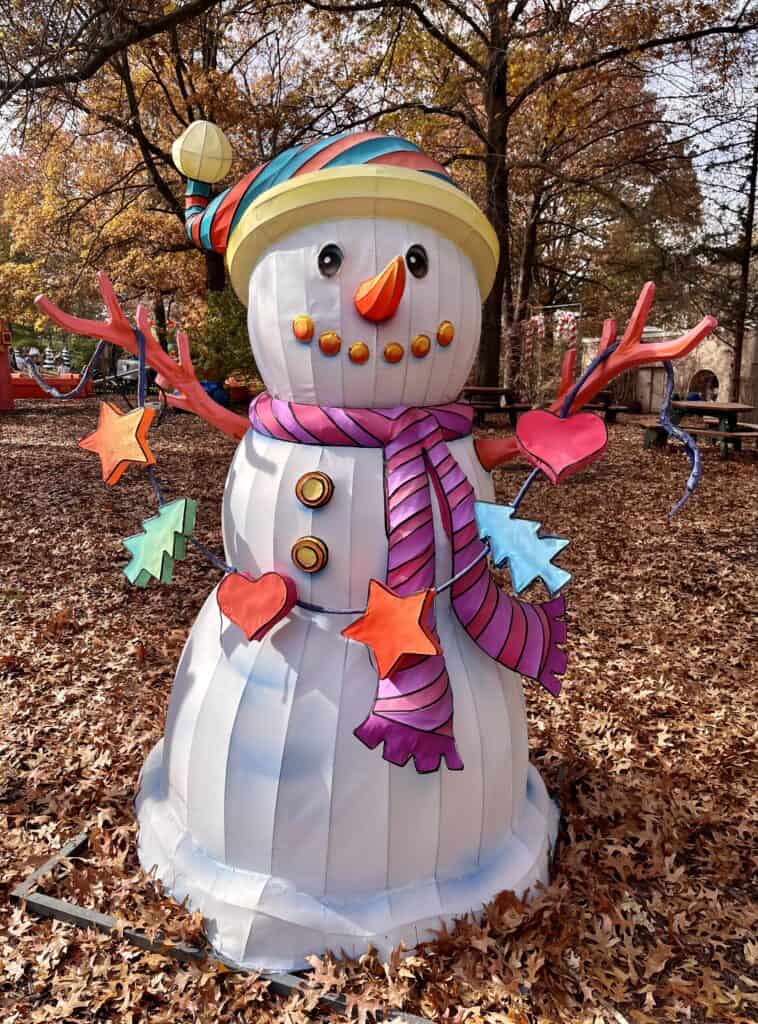
The Zoo paths are lined with the silk sculptures, depicting different holidays. I loved every one.
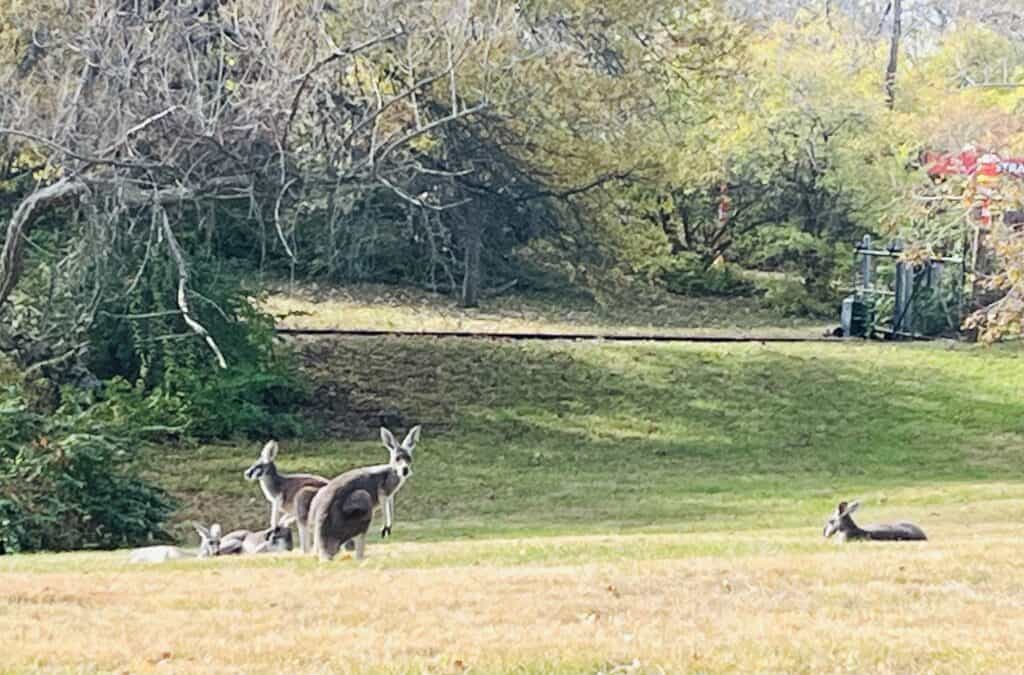
As I came around a corner, I was a little startled to realize the Kangaroos are unfenced and free-ranging. I had never encountered this in a zoo before, and it was quite a wondrous surprise.
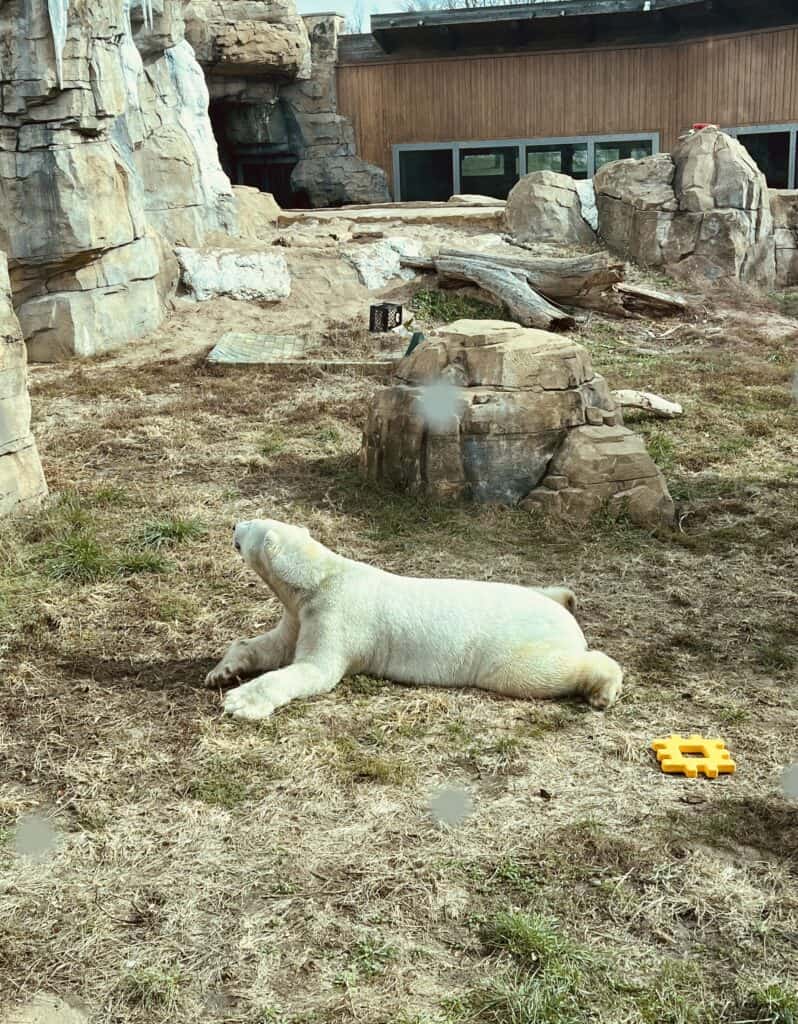
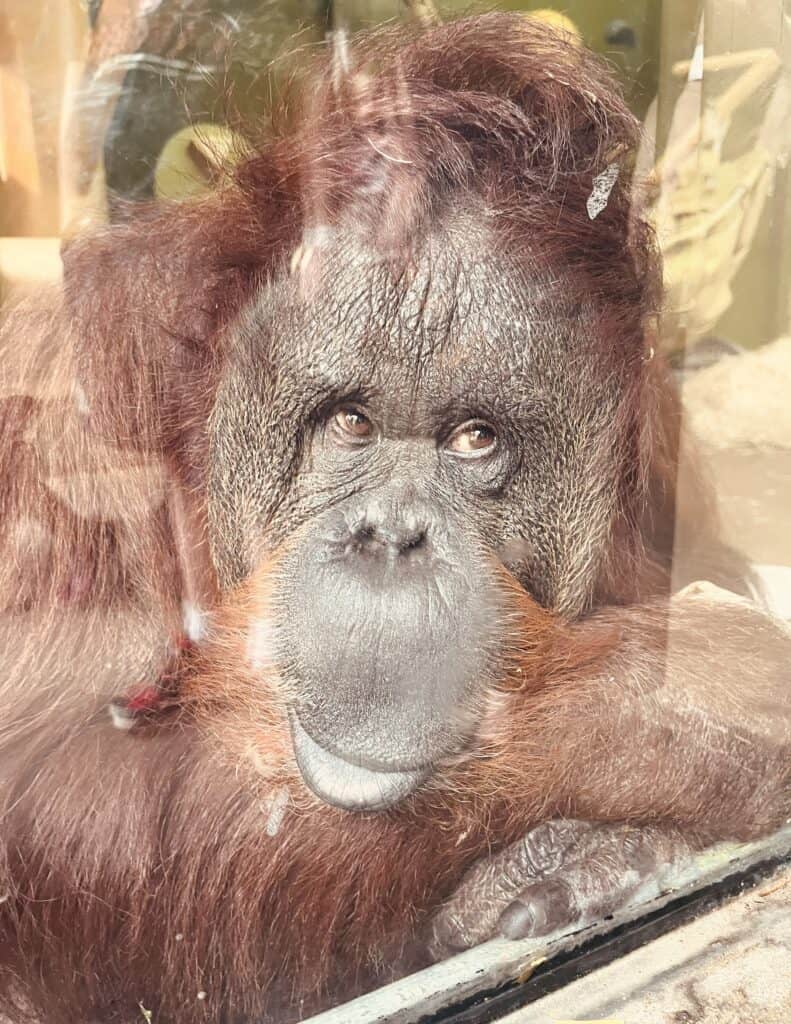
It was fun watching the children’s awed responses to the polar bear and orangutan. The Kansas City Zoo is enormous and has much to experience. During November and December they are open for nighttime visits, when the silk sculptures come alive with lights.
Before my day concluded, I stopped into the Welcome Center to ask about the stories of the Zoo’s past. I was taken across the walkway to the Zoo Learning Center. The staff there showed me classrooms used for schoolchildren and scouts. Then I was taken to the Zoo library. I read through fascinating histories written by Kenneth Lee and Ruth Seeliger. The creation of the Zoo began in 1907. At that time, Zoos were just coming into being and were quickly gaining popularity, so Kansas City decided they wanted a Zoo. They selected land that had been donated by Thomas Swope in 1896 (more on that shocking subplot in a moment).
In the beginning years, the tiny startup Zoo began accumulating animals from circuses passing through town. The Zoo did not have a director or veterinarian, and the keepers were mainly from the surrounding farms. They were accustomed to handling domestic farm animals, not wildlife from other continents.
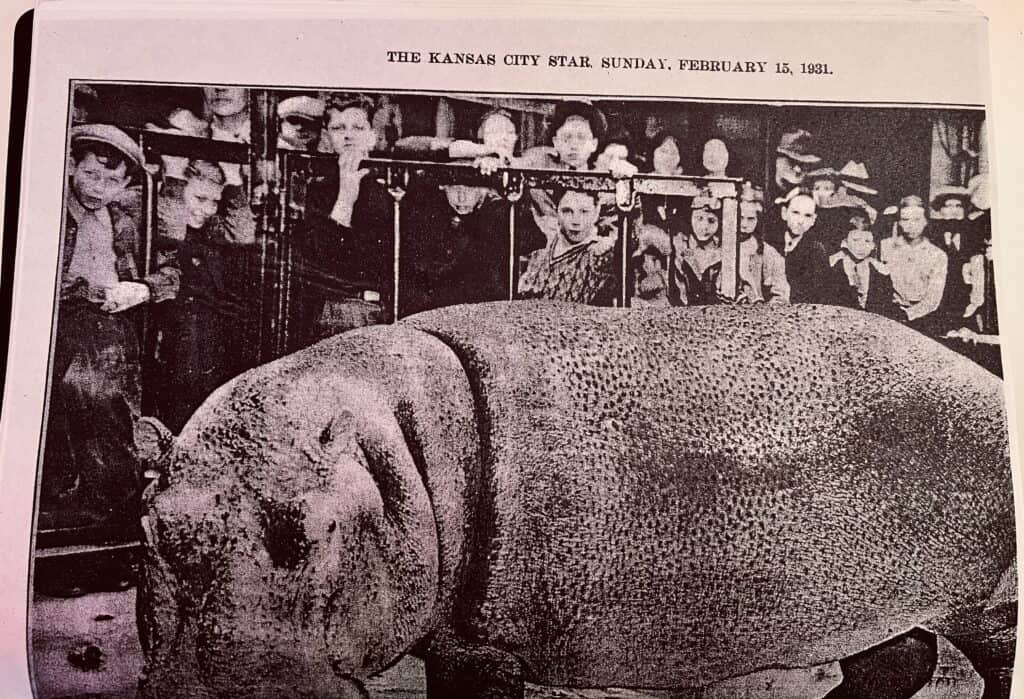
As was common with most early Zoos, the animals were in enclosures, not distanced from the public. Hands could easily reach in and pet the massive creatures. Many Midwest folk of that era had never seen exotic animals. Unbelievably, visitors were allowed to bring food from home and give it to the animals. But, after a time, a notice was posted requesting the public not feed “hard candy or marshmallows” to the zoo animals. However, the guests were encouraged to feed the elephants tobacco, as the zoo keepers believed it helped with parasites, and because the elephants liked tobacco. You can see where this is going… The expensive animals were dying off, and eventually the worse case scenario occurred: someone tossed a biscuit infused with amphetamine into the gorilla enclosure. An ape ingested it, and seized into convulsions. The ape died a grisly death. Thankfully, the tradition of allowing the public to feed the animals ended forthwith.
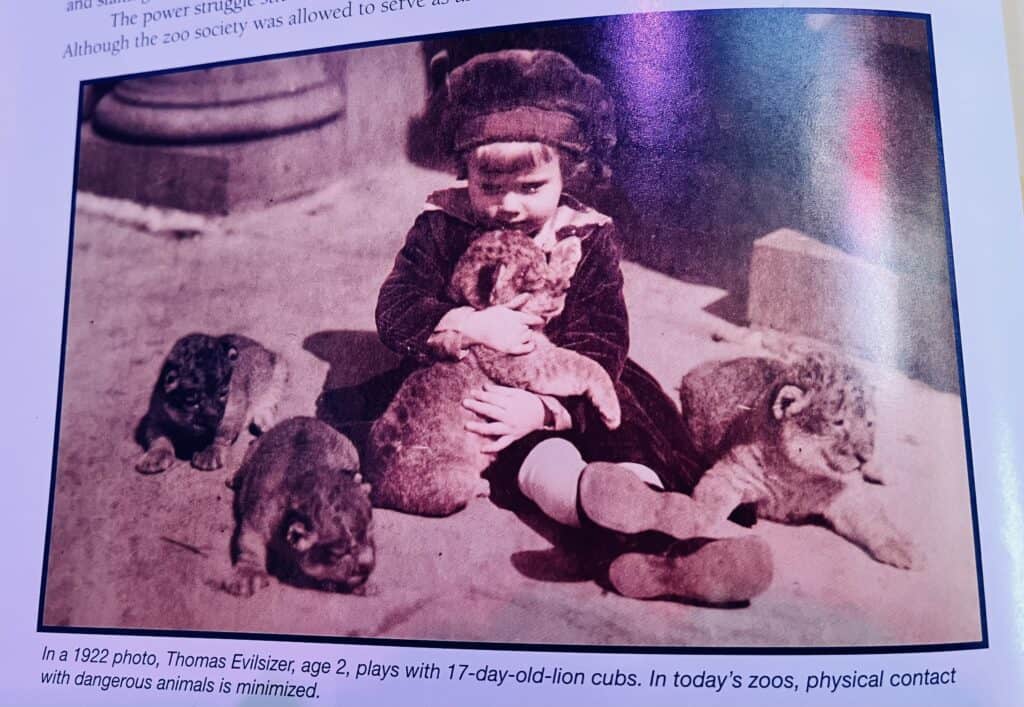
I cringed at this photo. Wouldn’t common sense tell you that allowing a toddler to play with lion cubs is not a good idea??
The monkeys were kept in cages close to the walking paths. They were frequently taunted by stone-tossing visitors. One bored, bright chimpanzee finally decided to retaliate, and began to throw feces at the guests. He reportedly had surprisingly accurate aim, even nailing a keeper as she rode by on her bike.
Today the Kansas City Zoo is a safe place for each animal within. They are treated with impeccable care. The KC Zoo has gained a distinguished reputation within the ranks of conservational efforts and the work towards the preservation of species.
As I came to the end of the pile of reading materials in the Zoo library, I discovered one last file. It was on Thomas Swope, the man who had donated the land upon which the Zoo was established. Still to this day, Swope is a huge name in Kansas City. Thomas Swope never married and had no issue. He was extraordinarily wealthy. He lived in a Victorian Castle with his niece and her physician husband, Dr. Hyde. As I read the file, a bizarrely complex story unfolded. Thomas Swope died suddenly one night, and the other nieces and nephews became suspicious. There was a massive fortune at stake. So the body was exhumed, and sure enough – Swope had died of strychnine poisoning. Dr. Hyde, who lived in the Swope house and was Swope’s personal physician was fingered as the suspect. Three trials later, without a consensus, the case was dropped (if you like lurid unsolved mysteries, you can read the full shocking story here).
I will never again experience a trip to the Kansas City Zoo in the same way. I will see it in the new light of all this astounding history! It will make my visit all that more interesting and enjoyable.

